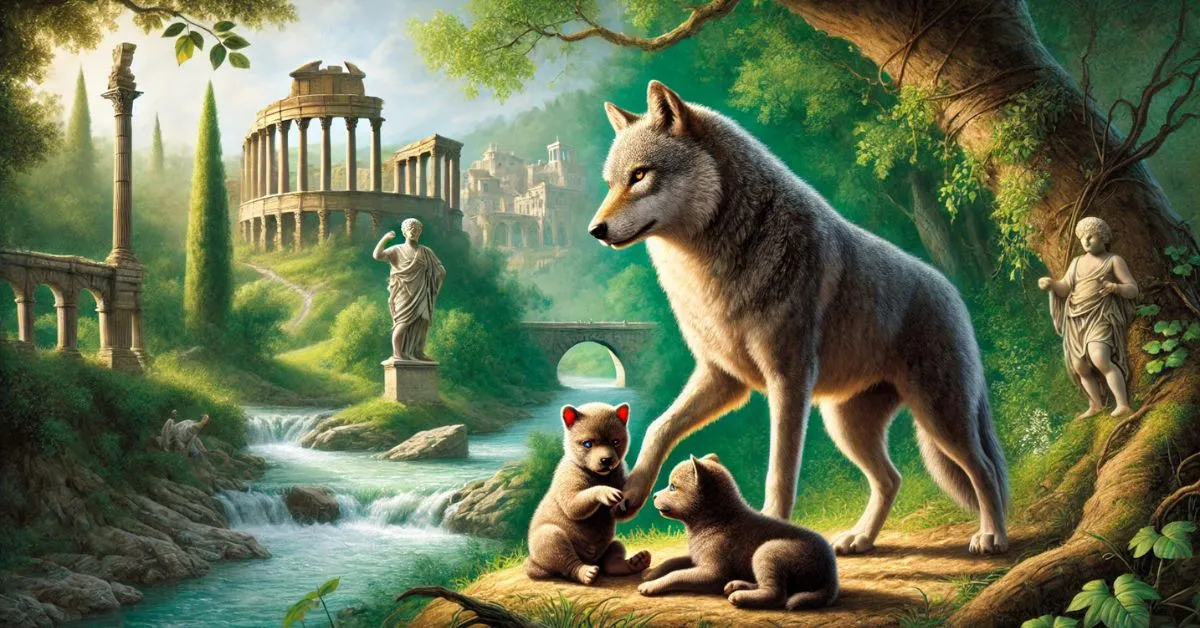The connection between Lupa and Callistrata is a fascinating topic that intertwines elements of Roman mythology, legend, and cultural storytelling. To unravel this link, one must explore the roots of Lupa, the she-wolf tied to the founding myth of Rome, and delve into the symbolism, myths, and roles that define these legendary figures. This exploration provides not only historical context but also a rich tapestry of their enduring significance.
Who Is Lupa in Roman Mythology?
The name Lupa translates to “she-wolf” in Latin, a central figure in the Roman foundation myth. According to legend, Romulus and Remus, the twin brothers who founded Rome, were abandoned as infants and left to die along the Tiber River. They were saved by Lupa, a compassionate she-wolf, who suckled and cared for them in her den at the base of Palatine Hill, known as the Lupercal. This act of nurturing the twins symbolizes survival, protection, and the birth of a powerful civilization.
Over time, Lupa has evolved into an iconic figure in Roman art, culture, and politics. She represents more than a wolf; she is a powerful symbol of the city’s heritage and pride. The image of the she-wolf suckling Romulus and Remus is immortalized in the Lupa Capitolina, a bronze statue displayed in the Capitoline Museums in Rome.
Callistrata: A Lesser-Known Figure in Mythology
The story of Callistrata is less prominent but no less intriguing. She is a figure deeply rooted in ancient mythology, often tied to themes of spirituality, transformation, and guidance. While her exact origins vary, Callistrata is frequently portrayed as a figure of wisdom and a guide for heroes. Her role often overlaps with other mythological figures, serving as a bridge between mortals and divine intervention.
In certain interpretations, Callistrata represents the concept of nurturing through wisdom and providing guidance during a hero’s journey of enlightenment. This places her in a symbolic role similar to Lupa’s, making their connection an allegory for protection, guidance, and transformation.
Drawing the Connection Between Lupa and Callistrata
So, how are Lupa and Callistrata linked? The connection lies in their shared themes of nurturing, guidance, and protection. Both figures play pivotal roles in the journeys of heroes and the founding of civilizations.
Lupa’s Role as a Nurturer
In the Roman myth, Lupa’s nurturing of Romulus and Remus ensured their survival and ultimately led to the founding of Rome. Her story encapsulates the symbolism of motherhood, survival, and the creation of something monumental from a place of vulnerability.
Callistrata’s Role as a Guide
Callistrata often appears as a spiritual guide or mentor. In some interpretations, she aids heroes such as Jason Grace and other Roman demigods, including figures from modern retellings like The Heroes of Olympus series by Rick Riordan. Her role in aiding the heroes aligns with Lupa’s guidance of the legendary founders of Rome.
Together, Lupa and Callistrata symbolize the essential elements of growth and transformation—nurturing strength and wisdom to create a legacy.
Lupa as a Symbol in Roman Culture
The she-wolf is one of the most recognizable symbols of Roman culture. From ancient times to modern depictions, Lupa’s story has been a cornerstone of Roman identity. The Lupa Capitolina statue, a bronze masterpiece, is a testament to her lasting significance.
Cultural Significance
Lupa embodies the essence of Roman pride, serving as a reminder of the city’s legendary origins. She is celebrated in art, literature, and public monuments, making her a revered figure in the rich tapestry of Roman mythology.
Political Symbolism
Throughout Roman history, the image of the she-wolf has been used in politics and propaganda, reinforcing Rome’s strength, resilience, and connection to its mythological past.
Modern Depictions
Lupa continues to be a subject in popular culture, appearing in stories like The Trials of Apollo and The Lost Hero, where she trains and guides young demigods at Camp Jupiter. These modern interpretations highlight her role as a bridge between the mortal and divine worlds.
Callistrata’s Symbolism and Significance
Though less prominent, Callistrata plays an equally symbolic role. She is often associated with spirituality and the guidance of souls on their journeys. Her connection to water and the natural world adds a layer of mysticism to her character.
Role in Mythology
Callistrata often appears as a guardian of sacred places or as a mentor to heroes. In some stories, she is tied to figures like Jason and Apollo, acting as a spiritual anchor for their quests.
Representation in Modern Tales
Similar to Lupa, Callistrata has found her place in contemporary adaptations, symbolizing the enduring power of myth and its relevance to modern storytelling.
Shared Themes: Nurturing and Guidance
The link between Lupa and Callistrata can be best understood by examining their shared themes. Both figures serve as anchors in their respective narratives, providing support and wisdom that enable their protégés to achieve greatness.
- Protection
Lupa’s physical protection of Romulus and Remus mirrors Callistrata’s spiritual guidance of heroes on their journeys. - Guidance
Just as Callistrata helps characters navigate challenges, Lupa guides Rome’s founders toward their destiny. - Transformation
Both figures symbolize a turning point—Lupa’s nurturing leads to the creation of Rome, while Callistrata’s wisdom transforms ordinary individuals into extraordinary heroes.
Depictions in Art and Literature
Lupa and Callistrata have inspired countless depictions in art, literature, and popular culture:
- The Lupa Capitolina Statue
This iconic bronze statue, often referred to as the Roman she-wolf, depicts Lupa suckling the twins. It is a powerful image of protection and survival. - Callistrata in Literature
While there are fewer visual depictions of Callistrata, her role as a guide and mentor is celebrated in stories that explore themes of spirituality and transformation. - Modern Interpretations
Stories like The Trials of Apollo and The Heroes of Olympus have revived interest in these mythological figures, weaving them into contemporary narratives that resonate with new audiences.
Conclusion
The connection between Lupa and Callistrata reveals a profound interplay of themes that define mythological storytelling. While Lupa is celebrated as the she-wolf who nurtured Rome’s legendary founders, Callistrata embodies wisdom and spiritual guidance. Together, they represent the power of nurturing and mentorship in achieving greatness.
Through their stories, both figures remind us of the importance of protection, guidance, and transformation in building legacies that endure the test of time.
FAQs:
What is the significance of Lupa in Roman mythology?
Lupa is the she-wolf who nurtured Romulus and Remus, the founders of Rome. She symbolizes protection, survival, and the origins of Roman civilization.
How is Callistrata connected to Roman mythology?
Callistrata is often associated with spiritual guidance and the mentoring of heroes, providing wisdom and support during their journeys.
What does the Lupa Capitolina statue represent?
The Lupa Capitolina statue depicts the she-wolf suckling the twins Romulus and Remus. It is a powerful symbol of Rome’s legendary origins and cultural pride.
How are Lupa and Callistrata similar?
Both figures represent nurturing and guidance. Lupa protects and nurtures Rome’s founders, while Callistrata provides wisdom and support to mythological heroes.
Where can one see depictions of Lupa and Callistrata today?
The Lupa Capitolina statue is housed in the Capitoline Museums in Rome. Callistrata’s presence is more common in literature and modern adaptations of mythological tales.











